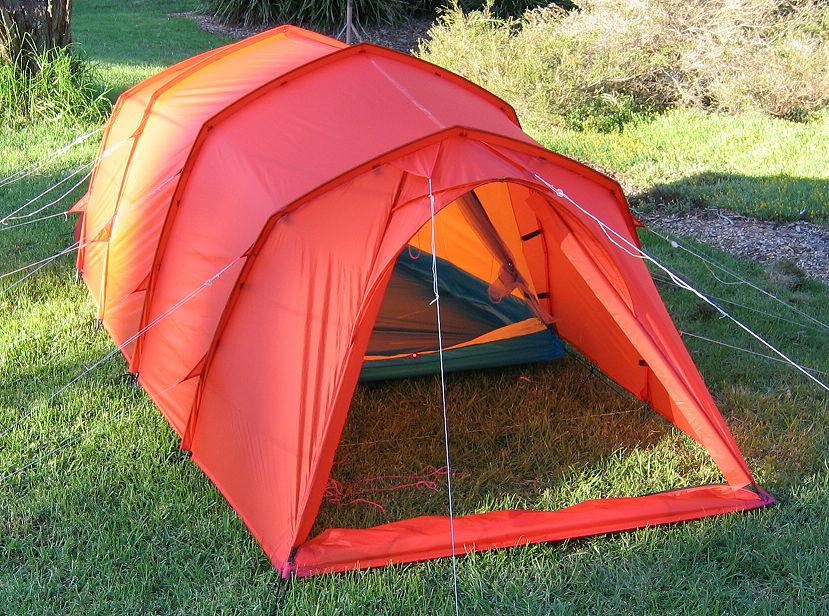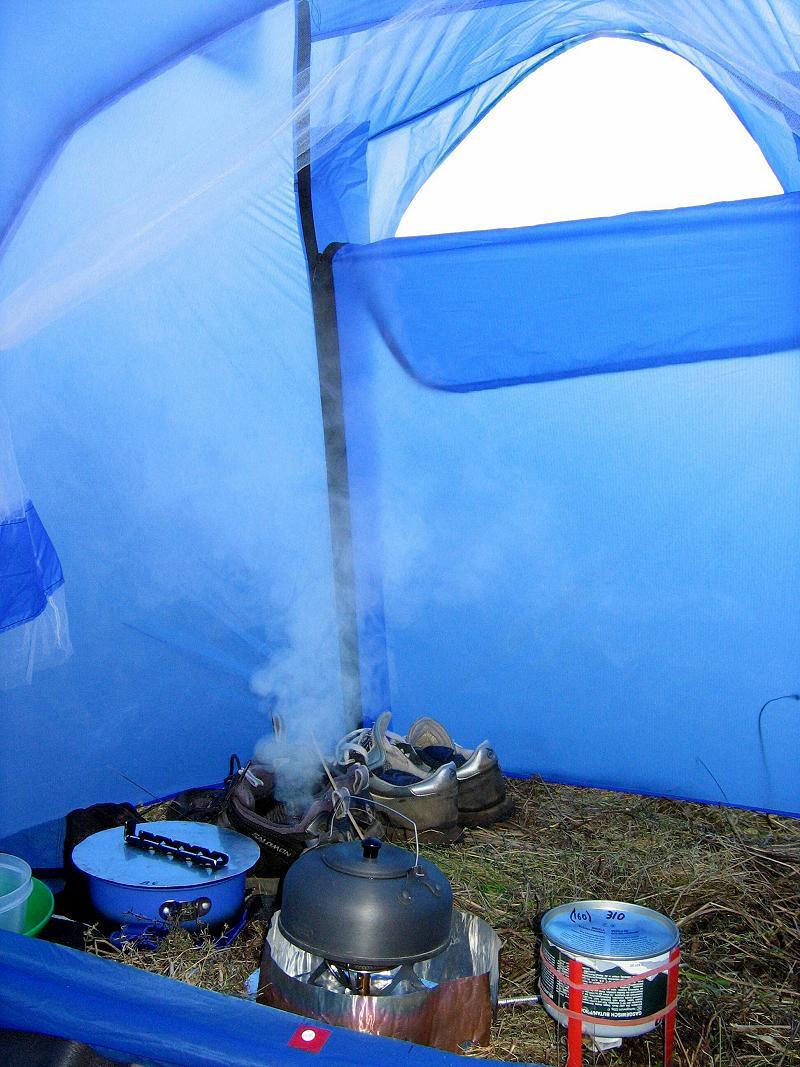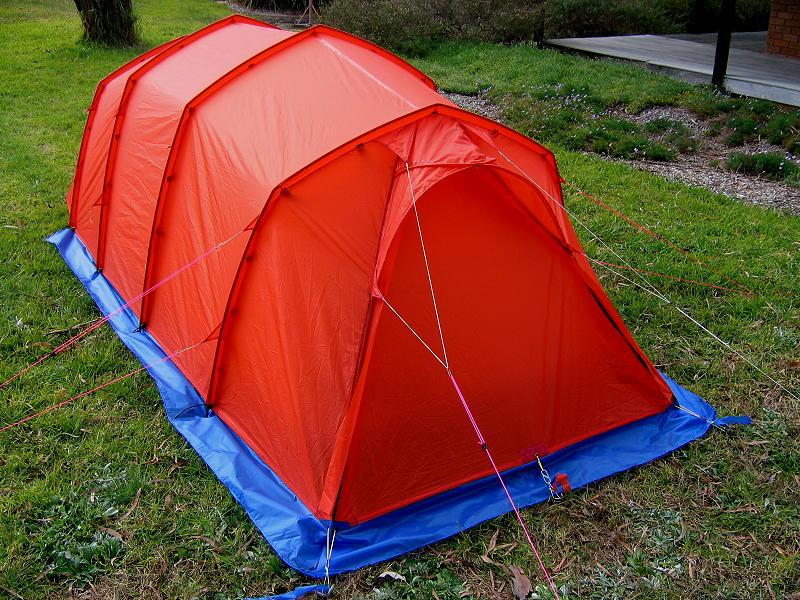Topic
Zpacks announces a free standing tent @ $699
Forum Posting
A Membership is required to post in the forums. Login or become a member to post in the member forums!
Home › Forums › Gear Forums › Gear (General) › Zpacks announces a free standing tent @ $699
- This topic has 62 replies, 19 voices, and was last updated 4 years ago by
 Roger Caffin.
Roger Caffin.
-
AuthorPosts
-
Mar 26, 2020 at 5:57 pm #3637945
Well the good news is that it’s under $700.00….
Mar 27, 2020 at 1:02 am #3637997Funny how one thread dies and the later one about the same tent flourishes. From the comments (including mine), maybe silence was the better response.
Geoff,
Scandinavia has large expanses of very flat terrain. Have watched videos of backpacking on the Kungsleden. Neither New England nor the central Rockies where I go are anything like that – much rockier and more uneven ground surfaces. I would never make a tent without the vestibule panels rising an inch or two at the front, to protect the fabric and the door zipper(s) from abrasion.Opening the vestibule door(s) part way for ventilation is only for cooking in the vestibule when it’s raining. (I’d open them all the way if it was just muggy.) Have experimented with button downed tents of which you speak. They are often like steam baths, and letting a little air in within 1-2 inches from ground level at the front of the vestibule has never created a ballooning problem, and have been in some pretty awful winds . I think the total buttoning up thing is the result of pre-natal tendencies. But I do like button down collars.
Mar 27, 2020 at 2:47 am #3638002The two threads were created one after the other because the first one did not load at once leading the OP to think another one had to be made.
Mar 27, 2020 at 7:41 am #3638018The two threads were created one after the other because the first one did not load at once leading the OP to think another one had to be made.
I think Sam is referring to this post from a couple weeks ago:
https://backpackinglight.com/forums/topic/new-free-duo-tent-from-zpacks/
Mar 27, 2020 at 10:21 am #3638051Sam: I hear what you’re saying; perhaps it’s true. For years I slept in a Fly Creek UL1 (yeah I know it’s popular) that had walls that came down very close to the ground and limited interior space. And fabric walls that reached high up. It didn’t have bad condensation issues at all. Abrading wasn’t an issue and the Sierra are very rocky at altitude.
One of the things I like about Durston’s tent is the way the panels come down close to the ground. I grew up in the PNW and so I have rain and weather in my psyche. I’m not pre natal in other words.
The Zpacks solomid ‘beak’ just made me uneasy because of wind penetration. It’s like a shade that you can’t close on the bottom quarter of a window. You prefer that; fair enough.
Mar 27, 2020 at 5:40 pm #3638122It amazes me that all experts on this forum are ripping this tent with out actually trying it.This tent might be a piece of crap, but at least let someone like Ryan test it before totally condemning it.
Mar 27, 2020 at 6:00 pm #3638127“It amazes me that all experts on this forum are ripping this tent with out actually trying it.”
While certainly offering no guarantee of making correct conclusions, experience is a very useful and often accurate guide. I do not need to eat a peanut butter and liverwurst sandwich to know it will taste bad.. to me…you might like it.
Mar 27, 2020 at 6:26 pm #3638133JCH now that is a very open minded approach. When I pick my next gear I’ll ask you if you if you would like to eat it!
Mar 27, 2020 at 6:27 pm #3638134“While certainly offering no guarantee of making correct conclusions, experience is a very useful and often accurate guide. I do not need to eat a peanut butter and liverwurst sandwich to know it will taste bad.. to me…you might like it.”
+1
Mar 27, 2020 at 6:43 pm #3638139Wow, I had a post reported for “inappropriate content”! Geeze, THAT post? I’m chuffed, but it was probably a mistake.
Mar 27, 2020 at 7:20 pm #3638145@jscott
Likely a mistake. I think about 1/3 of the reported posts are accidental clicks.
Mar 27, 2020 at 8:26 pm #3638152experience is a very useful and often accurate guide.
Yup.Cheers
Mar 28, 2020 at 7:13 am #3638193Sam
I’ve logged literally hundreds of nights in shelters with down-to-the-ground flys.
Obviously, in certain conditions you get condensation, but it’s never been a practical problem – ie I’ve never had a wet sleeping bag which is all I really care about.
I’ve never had a zip failure either – that’s just a question of good design. You don’t need to take the zip right down to the ground – a small gap prevents abrasion and doesn’t cause any issues with stormproofing.
I prefer designs that allow a thru-draft. My TrailStar can get quite bad condensation despite the single large open door. I lot of small mid-style designs seem to suffer from this. Moving air through the shelter seems to help a lot.
Mar 29, 2020 at 7:04 pm #3638560“You don’t need to take the zip right down to the ground – a small gap prevents abrasion and doesn’t cause any issues with stormproofing.”
Geoff, Matthew et al:
Agree. And that’s all I am saying. A small gap just at the bottom of the front point(s) of the vestibule. But note that will also create a small bit of ventilation. I think additional low ventilation should be provided as well, though. No question about the need for top ventilation, although still see tents without it.BPL is infamous for false dichotomies, like High vs Low ventilation. I grew up with the assumption that both are needed. It was an accepted principal of tent design. I’ve never seen it challenged until now. But nothing wrong with something new; that is the lesson from Galileo.
While Scandinavia and the UK may have plenty of very flat places big enough for a tent, I haven’t found that to be the case in the Appalachian chain or the central Rockies in the USA. In most of the wilderness areas and national forests in the USA one is not limited to designated or permitted campsites; so often there are not tent sites that have been ground down to something flat as a table top. Am thinking of the Never Summer Wilderness in CO, and the National Forest north of the White Mountains in NH, for example. Wandering around for days on end is a great joy when it is OK to stop and camp at the end of the day without a lot of hunt and seek, so long as forest regulations are respected of course.
Also, when a vestibule is pulled out and staked, it is important that it also serve to stabilize the tent, whether it is a tunnel or a hybrid. Here, am specifically thinking of two peg vestibules on Roger’s tunnels or on a hybrid framework design. While my current tent, a modded Goondie, has pointy one peg vestibules, Roger has converted me to the two peg approach because it is much more stable in winds.
That is because the two beaks of a two peg vestibule, when pulled very tight, pull the entire canopy taut, and double that for two vestibules. If the beak fabric panel were cut to bring the vestibule right down to the ground, the vestibule would wrinkle when staked, and not tension the canopy. So for that reason, and for some space above uneven and abrasive terrain, I allow the vestibule to taper up to 1-2″ of height at the stake point on the beak. Frankly, have never considered anything else as practical, and so choose to design tents that way.
If you want snow skirts, put them in; but I’m not going to carry them around. If you anticipate any likelihood of spindrift, put them in as you wish. Hope this clarifies my point.
Sorry, but thinking that all this was obvious, got a little carried away with the arguments, so made the crack about prenatal tendencies. Just so all know, I’ve never been politically correct, absolutely abhor FB and most social media, as well as the little thumbs up & down thing that BPL tried for a while on the forums. Recommend to all FB fans the 3-part ‘Frontline’ special that PBS did recently about FB, and it speaks with more authority than I could ever hope to. But beware, if you watch it, you might get infected and abhor FB as much as I do. It is pretty dam infuriating.
Mar 29, 2020 at 8:21 pm #3638579Zips to ground level
I started off opening the door from the ground up to the top, like this:

(My first winter tent.) But I found the flapping door (above Sue’s head) to be a confounded nuisance. It was forever falling back down near the stove.
So later tents have the door opening downwards, and being rolled up on the ground.

Yes, you have to step over the door, but in practice that is so easy.

Easton assured me that they could not sell a tent with the door on the ground, but I am now convinced they were wrong. They did not understand the UL high-performance market.
One HUGE advantage that comes with having the door open downwards is that the hemline of the tent stays intact and helps keep the shape and tension of the tent at all times.
A second huge advantage of opening downwards is that I can open the top of the door slightly, keeping the open under the hood or verandah so the rain can’t get in, but open enough that the steam and CO can escape easily.

Cheers
RogerMar 30, 2020 at 10:55 pm #3638834Roger, never noticed that door that much, although know that you must have at least shown photos before of tents with the drop down doors.
Easton may have been right, and other companies might say the same; but few of them go camping much in the conditions you do. In other words, they don’t want to make tents that require TLC from the end users in foul weather. (Do you say TLC in Oz? It means tender, loving care.)
The industry aside, that is great food for thought. And it relates to my last post, because don’t know if I have the skills to get the tautness just right with the sides of the front vestibule coming all the way to the ground. Certainly simplifies front venting, though, in a very elegant way, and without snow skirts to stop spindrift. Is that tulle on the inside of the blue tent?
On an only slightly related note, I now realize that my anatomical remark, intended to be comic, but coming across as crude and sarcastic, was disturbing to readers. I apologize for the remark, and will be more careful in the future about what I post here. My iconoclastic nature is no excuse.
Mar 31, 2020 at 12:48 am #3638842I allow the vestibule to taper up to 1-2″ of height at the stake point on the beak.
Curiously enough, I do the same. It does help with putting tension into the roof. 50 mm for the summer tent but only 25 mm for the winter tent.Mind you, with the winter tent I am a bit more aggressive about that tension. This shows the windward end. Note extensive guy ropes at the end. The zips go to near the bottom of the corners, but the ‘bottom’ is fully bridged by blue coated 200 denier nylon fabric.

TLC – yep. I have zero problems with the idea of giving my tents TLC. After all, they look after us.
Tulle on the blue tent: yep. It has lasted for years, despite the light weight. The ‘thread’ is actually more like fine single-filament fishing line, NOT micro-fibre. Quite rugged.
Note: the pink string in the photo is nylon mason’s (bricky’s) line, and NOT the real guy ropes. The real guy ropes are Spectra sheathed in Dacron. The adjusters are ClamCleats CL266.
Cheers
Mar 31, 2020 at 2:26 am #3638846Yet another tent thread that’s turned into a “look at my tunnel tent” thread
Mar 31, 2020 at 3:12 am #3638847Snicker.
True.
Sorry about that.Mar 31, 2020 at 5:27 am #3638851Oh well, given that the thread seems to have drifted over the horizon let’s go with the flow…
I like Roger’s top-down door – as he says, it’s ideal for venting. For decades I’ve used a 4 season tent with top down double inner doors (solid and mesh) that sit on the floor when fully open and never found this to be a practical problem. They are easy to tidy away and the mesh has never been damaged.
But as an outer door this can only really work in a shelter with unusually large vestibules and a separate beak – otherwise driven rain is going to get into the living area.
The bottom-up three-peg vestibule is a pretty good alternative for a smaller shelter, as illustrated in the classic Saunders Jetpacker. In return for your extra peg you get 9 potential configurations for the vestibule, compared with just 3 for a one-peg setup. So it’s possible to keep the front open in all but the worst weather and dial-in the degree of shelter vs venting and views that conditions dictate. Add a locking zip and well placed tie-backs for the doors and you have a very flexible setup. Combined with good venting at the rear you can keep air flowing through the shelter in pretty much any weather.
Here are some shots of just a few of the options. Note that this is another commercially successful tent with top-down inner doors.
People have fond memories of their Jetpackers – a nice one stills gets a good price on eBay even though they’re 50 years old. It’s a shelter that works well.
Mar 31, 2020 at 3:37 pm #3638939Not sure what is meant by a ‘beak’, but maybe the ‘hood’ or ‘verandah’ on my tents is the same thing? If so, yes, they are wonderful for giving you so much more working space in the vestibule in bad weather, and for so very little extra weight. The thing to note is that you could fit such a hood to most any tent design quite easily. You could retro-fit a hood to a commercial tent as well.
Why don’t commercial tents have such hoods? Well, having made many tents, I can answer that: Adding a hood is a bit fiddly. It takes a bit of time and setting up. That translates into $$. The mfrs want to minimise that.
As for the ‘large vestibule’ – yes, I do have them in my designs. You can see them in my photos above. Why? If you want a tent for more than shade or keeping the dew off, then you will need somewhere to store your gear and cook your food in bad weather. Try doing that in a bivy sack!
But let’s look at the extra weight involved. Assume the extra fabric is 1.5 m up each side, and you want to add 333 mm in length: that is an extra 3.0 m * 0.333 = 1 squ m. At 30 gsm, that is an extra 30 grams to get a really wonderful living space under full shelter. You won’t need extra groundsheet or extra inner tent fabric for this. Is this worth while?
And this thinking applies to most tent designs, not just tunnels.
Cheers
Mar 31, 2020 at 6:22 pm #3638982+1 for the idea of large vestibules. As you say, the weight is trivial.
But very few lightweight tents seem to offer one.
The only downside is a few inches of additional footprint, which is rarely a problem.
While you enjoy the benefits every time it’s cold or windy or wet for views and venting, and for cooking if there aren’t bears about.
Mar 31, 2020 at 8:14 pm #3639000While you enjoy the benefits every time
Just so.

Cheers
Apr 3, 2020 at 9:49 am #3639469Could be an anomaly but a user on reddit is seeing pinholes in the fabric at the stess points possibly caused by the force of the pole cause on the fabric.
Apr 3, 2020 at 4:15 pm #3639520It’s a sort-of known problem with UL ripstop fabric. The big ripstop threads are too disruptive to the rest of the fabric. Unequal stretch.
Cheers
-
AuthorPosts
- You must be logged in to reply to this topic.
Forum Posting
A Membership is required to post in the forums. Login or become a member to post in the member forums!
Our Community Posts are Moderated
Backpacking Light community posts are moderated and here to foster helpful and positive discussions about lightweight backpacking. Please be mindful of our values and boundaries and review our Community Guidelines prior to posting.
Get the Newsletter
Gear Research & Discovery Tools
- Browse our curated Gear Shop
- See the latest Gear Deals and Sales
- Our Recommendations
- Search for Gear on Sale with the Gear Finder
- Used Gear Swap
- Member Gear Reviews and BPL Gear Review Articles
- Browse by Gear Type or Brand.








